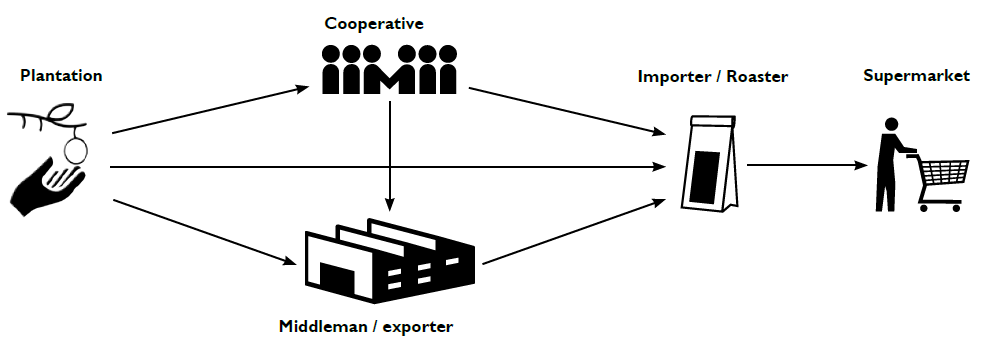A coffee bean takes a long and winding road between being picked off a bush and being tossed into your shopping basket. This is why many coffee brands don’t know which plantations they are buying their coffee from.
From plantation to the supermarket
Before coffee is poured into your cup, it has passed through many different stages. First, coffee workers, using either a machine or their own hands, pick the red coffee berries from the bushes. Then the berries are washed, dried, processed and classified, usually on the plantation itself. At this point, the different varieties of green coffee beans are ready for export.
Some Brazilian plantations sell green coffee beans directly to roasters and coffee importers abroad, but most sell their beans to middlemen and exporters. Some plantations are organized into cooperatives that gather coffee from several hundred plantations; these cooperatives then manage the coffee’s distribution to exporters and roasters. The roasters sort, roast and grind the coffee before it is packaged and distributed to stores.
Because of the many and varied links in this chain, many large coffee brands do not know the names of the Brazilian plantations that grow their coffee.
